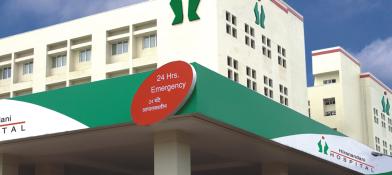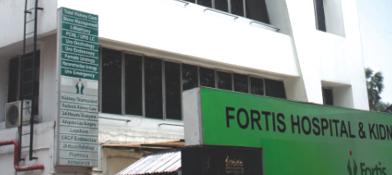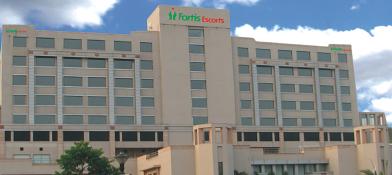Pacemaker
What is Pacemaker
Pacemakers are electric devices that are placed in the heart by surgery. They support the electrical functions of the heart in case of heart disease. They are tiny battery-powered devices that help the heart function properly. They can stabilize abnormal rhythms of the heart and prevent life-threatening heart failures.
Indications
The heart muscle contains a tissue that generates the electrical impulses for the heart to function. These impulses are generated at 60 to 100 beats per minute in a normal functioning heart. These electrical impulses are sent through the entire structure of the heart which causes the chambers of the heart to pump blood. When there is damage to the heart muscle that generates this electrical activity, the heart rate changes. This can lead to heart failure. Hence an artificial pacemaker is placed in the heart to control the electrical impulses that are generated by the heart. A pacemaker increases the heartbeat when the heartbeat is slow and can protect the failing heart. The damage to the functioning of the natural pacemaker can happen due to trauma to the muscles or medications.
Clinical conditions that can necessitate the insertion of a pacemaker include:
- Dysfunction of the natural pacemaker of the heart called the Sinoatrial node
- Acquired atrioventricular block caused by the delay in the conduction system of the heart
- After myocardial infarction or heart attack
Other less common clinical indications include:
- Complete heart block by birth
- Hypertrophic cardiomyopathy which is a type of heart muscle disease
- Heart failure
- Heart rhythm disorders like the Long QT syndrome
Contraindications
Pacemaker is not indicated in the following conditions:
- Syncope of unknown cause
- Heart rhythm disorders like sinus bradycardia
- Conduction disorders of the heart like Sinoatrial block, right bundle branch block
- Decreased heart rate during sleep
- A type of heart block called 2nd-degree Mobitz I (Wenckebach) AV block
Parts of Pacemaker
Pacemaker has two parts namely pulse generator and leads. A pulse generator is the battery of the entire device. It controls the electrical signals of the heart. Leads are flexible insulated wires that send electrical signals when they detect an abnormal heartbeat. Based on the type of leads there are three different types. They are:
- A transvenous system that transmits electrical impulses from the generator to the heart muscle.
- Epicardial system: These act by direct stimulation by attaching directly to the heart’s surface.
- Leadless system: These are the newer systems that work without any leads.
Based on the number of leads, pacemakers are again of three types. They are:
- Single chamber Pacemakers that have one lead attaching to the upper or lower heart chamber.
- Dual-chamber pacemakers that use two leads, where one is attached to the upper chamber and the other is attached to the lower chamber
- Biventricular pacemakers that are used in cardiac resynchronization therapy
Before the Procedure
An individual needs surgery to get a pacemaker. All the medications taken by the individual should be informed to the HCP along with the history of previous diseases, infections, surgeries, and allergies. Based on the medications taken, some medicines are advised to stop depending on the health condition and risk vs. benefits. These include over-the-counter medications, blood thinners, and opioid painkillers. Other medicines may be prescribed by the HCP before undergoing surgery.
By a physical examination, the healthcare professional assesses the severity of damage to the heart pacemaker. Physical health will be assessed using blood tests, electrocardiogram, chest X-ray, and echocardiogram. These are done to assess the body functions and know the current health status.
An Electrocardiogram is done to understand the electrical function of the heart, a chest X-ray is done to assess the size and shape of the heart, and an echocardiogram gives information about the structure of the heart, its valves, and blood flow through the heart. Holter monitoring records the heart rate and rhythm during daily activities. Exercise tests are done to understand the heart function under stress or physical activity.
During the Procedure
Pacemaker surgery can be done under general or local anesthesia. The entire chest area is sterilized, and the skin will be made numb using anesthetics. One or more wires are sent into the vein near the collarbone. Using X-ray-guided images, the wires are sent to the heart. One end of the wire is attached to the pulse generator of the pacemaker and the other end to the heart muscle. This is placed under the collarbone. When placing a leadless pacemaker, all the parts are sent through a catheter from the groin area. And is guided to the heart.
After the Procedure
An individual will be constantly monitored till the vitals stabilize and for any complications. Medications like antibiotics, painkillers, and blood thinners will be given to ward off infections and pain and prevent blood clots. Recovery time depends on the medical condition of the individual. Multiple follow-up appointments will be given to check the device's functioning and for any complications.
Instructions will be given on how to take care of the pacemaker. These include:
- Keeping the mobile at least 15 inches away from the pacemaker.
- Do not stay long near the metal detectors of security systems.
- Inform the healthcare providers of the presence of pacemakers when taking MRI and CT scans, radiation therapy, and ultrasonic scalers.
- Stand away from heavy machinery like welding equipment, high-voltage transformers, and motor generators by at least 2 feet.
Risks and Complications
Pacemaker surgery is associated with risks and complications. Infection at the site of the pacemaker placement, swelling, bruising, bleeding, blood clots, and damage to the adjacent nerves or blood vessels are some of the risks associated with pacemaker placement. Collapsed lung, pooling of blood in the space between the lung and chest wall, and displacement of the device leading to a hole in the heart are some of the complications.
Conclusion
Pacemakers are vital electrical devices placed in the heart that regulate heart rate in heart diseases. Generating electrical impulses they support heart function and prevent it from failing. They play a vital role in managing heart health and reducing the risk of heart disease.
































